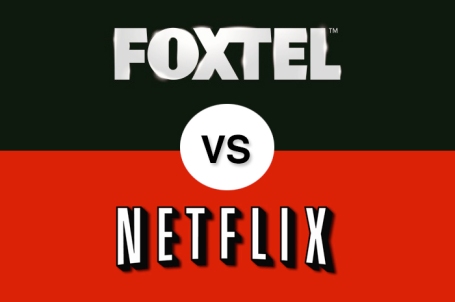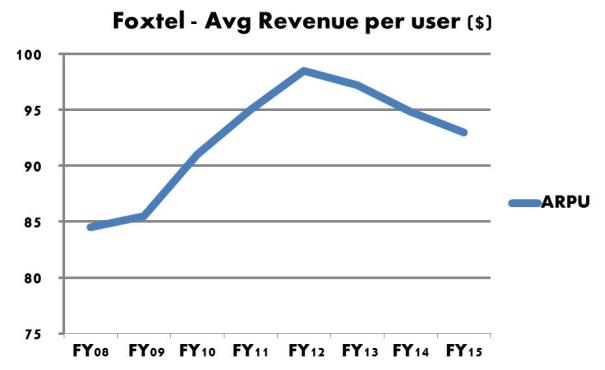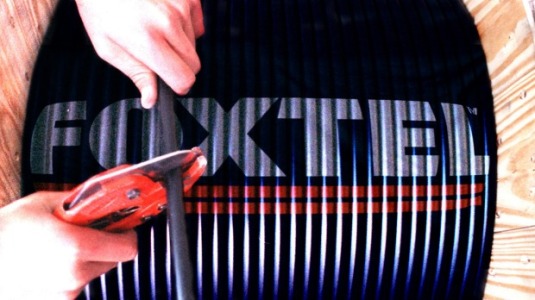Group 186 – Foxtel has implemented an aggressive pricing strategy in a changing marketplace but will it have the desired effect?
The Strategy
In November 2014, Foxtel, Australia’s largest pay television provider undertook an aggressive pricing strategy that saw it slash pricing to customers by around 50%1. The strategy was implemented in order to increase subscriber numbers and help combat the launch of Netflix and its smaller rivals (Stan and Presto) in Australia. It was expected that these new offerings would reduce the number of subscribers to Foxtel services.
Foxtel packages reduced $49 per month down to $25 for its basic packages. This move was made to bring Foxtel more in line with the new, lower-cost competitors that have entered the market. American giant Netflix, Stan (owned by Nine and Fairfax) and Presto (Foxtel and Seven West’s venture) all operate subscriptions at around $10 per month.
Applying the approach used by Porter in classifying business strategies (Iacobucci, 2013, p. 214), it would appear that Foxtel has redirected their business strategy away from a differentiated niche strategy to what could be considered as a cost leadership or in this case loss leadership strategy.
The Impact
The result over the next six months was that Foxtel’s subscriber numbers increased dramatically. For the 2015 financial year, subscriptions were up 9% on the prior year. Foxtel CEO, Richard Freudenstein remarked that “Last year we took the bold step of changing our pricing model to attract more customers. These results demonstrate that was the right call. The $25 level (new pricing level) has got people to think about Foxtel again and to make the phones ring.”
The new pricing has not only helped to attract new customers but also retain existing customers. Foxtel recorded a reduced churn rate of customers of 10.9%, down from 12.5% in the previous year.
Increasing subscribers is one thing but what was the impact of the lower selling price? In the corresponding period that Foxtel reported that subscriptions increased by 9%, revenue increased by only 1%. Foxtel uses a measure, Average Revenue per user (ARPU), which represent how much money it receives from the average subscriber. This is a clear demonstration that Foxtel is selling more subscriptions but they are selling them for a lower price.
What does this mean now?
Foxtel has been able to capture market share through opening up another market segment through a market development strategy by reducing the entry price by stripping out a number of channels on its beginner package. Additionally Foxtel aim to penetrate deeper into their current niche market through providing a range of new benefits and services to its Platinum subscribers.
What about the future?
With such a large reduction in the average spend from users, is Foxtel’s pricing strategy going to be sustainable?
In a recent article written by Tom Boyd in the AFR titled Murdoch’s radical Foxtel play, Boyd highlighted that Coles and Woolies regularly conducted loss leader strategies similar to this and as a result claimed the increase in foot traffic and larger basket sizes for groceries justified the move.
However, unlike supermarkets Boyd explained that Foxtel does not have other products to cross-sell which limit its ability make up the lost profit margin from slashing prices (AFR, 2014).
Additionally loss leadership strategies could cause unintended consequences including attracting non-loyal customers, negatively impact the brand, and from a broader perspective squeeze the margins of the entire industry otherwise known as game theory (Iacobucci, 2013, p.123).
Without this cross-sell capability, and given the other potential consequences of this loss leader strategy the key intent of Freudenstein could be an attempt to harvest profits from the cable business; i.e. lowering prices and milking the product and profiles knowing that demand will continue to drop (Iacobucci, 2013, p. 214). A sign of harvesting other than lowering prices is that there is minimal investment in the product. It would appear that investment at Foxtel is being directed towards Presto and little toward Cable.
As mentioned by Boyd in the earlier article referenced (AFR, 2014), one glimmer of hope Foxtel’s cable business does having going for it with its cost leadership strategy will be that it could become a mass marketing offering and result in the potential removal of anti-siphoning rules that have historically restricted sports content on pay TV. This could provide greater customer choice and re-invigorate the cable business.
It will be interesting to see whether Foxtel are the winner or loser moving forward.
What is your preference for pay TV going forward? Will you cut the cable?
Where do you see Foxtel’s cable future?
Is there a more effective pricing strategy that they could employ now to manage the headwinds that they are faced with?
*Please note that numbers used are illustrative only. The best effort has been made to validate accuracy but disclosures made in the industry are varied.
References
Manning, J (2015), The price is right for Foxtel, retrieved 01 September 2015, <http://www.mediaweek.com.au/the-price-is-right-at-foxtel/>
White, D (2015), Foxtel’s price cuts boost subscribers to 2.8 million, but at a cost, retrieved 01 September 2015
<http://www.smh.com.au/business/media-and-marketing/foxtels-price-cuts-boost-subscribers-to-28-million-but-at-a-cost-20150812-giy0zo.html>
Boyd, T (2014), Murdoch’s radical Foxtel play, retrieved 01 September 2015, <http://www.afr.com/business/murdochs-radical-foxtel-play-20140904-jer8m>
Iacobucci, D 2013, MM4, Cengage Learning, Mason OH, USA
Davidson, D (2014), Foxtel’s subscription rises as pricing strategy pays off, retrieved 28 August 2015, <http://www.theaustralian.com.au/business/media/foxtels-subscription-rises-as-pricing-strategy-pays-off/story-fna045gd-1227482664955>
Maddock, R (2015), Foxtel: The End Is Nigh. Here’s Why, retrieved 28 August 2015, <http://www.lifehacker.com.au/2015/08/foxtel-the-end-is-nigh-heres-why/>






